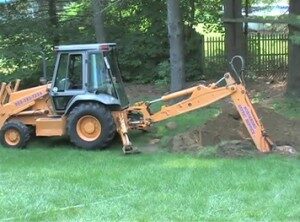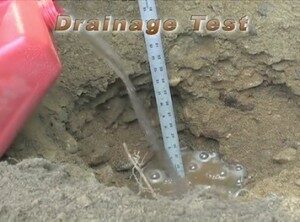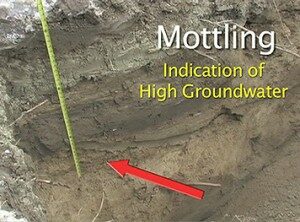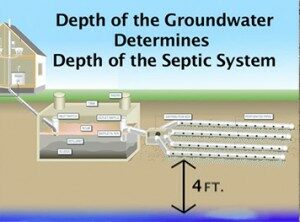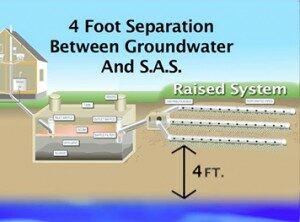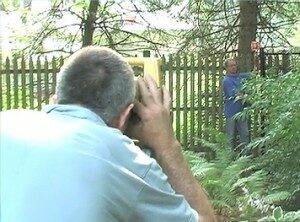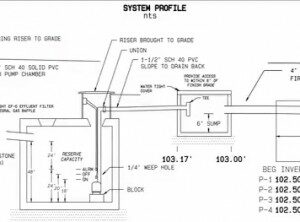The Perc Test is the first test to determine the size of a septic system that’s needed for a specific property. A large backhoe is needed to dig a series of holes—the shallow holes, usually 3-4 feet deep allow the engineer to perform a drainage test where the new leaching area (or soil absorption system) will be installed.
The engineer pours water into the hole and the rate at which the water percolates into the soil will determine the overall size of the leaching area. Fast draining soils like sand and gravel require a smaller system than slow draining soils like clay.
Deep holes allow the design engineer to determine the high groundwater elevation which will determine the elevation of the new system. The new system requires a four foot separation between the groundwater and the leaching area (or soil absorption system). A raised system is a result of high groundwater.
As part of the preliminary work, the lot is surveyed to locate property lines, wells, trees, pools and other setbacks. With this information, the design engineer can draw up a septic design that can be viewed and approved by the local board of health. The plans are also used to price the new system.
Educational video: Perc Test
- BACKHOE DIGS A SERIES OF HOLES
- SMALL HOLES ARE DUG FOR TESTING PERCOLATION
- WATER IS POUR TO MEASURE PERCOLATION
- MOTTLING (COLORING) DETERMINES HIGH GROUNDWATER MARK
- DEPTH OF GROUNDWATER DETERMINES ELEVATION
- RAISED SYSTEM IS NEEDED WHEN GROUNDWATER IS HIGH
- PROPERTY IS SURVEYED
- ENGINEER PLANS ARE CREATED

